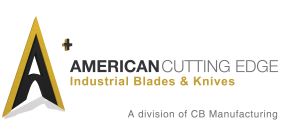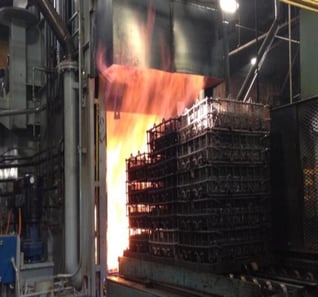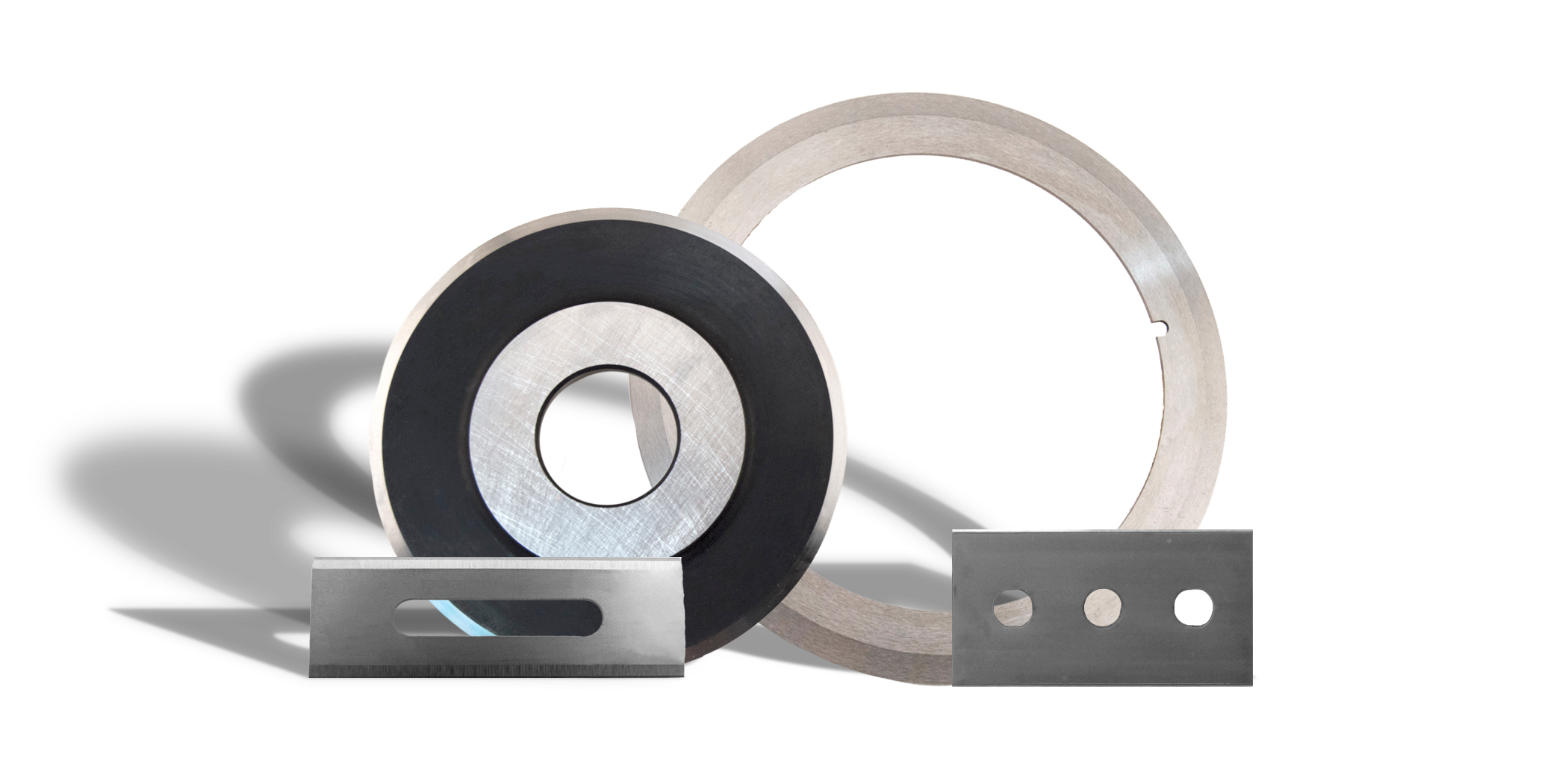The purchase of industrial knives and blades is typically made based on price. End-users know what knife or blade is required for the machine, they look up the correct item number, compare prices and then buy the product that has the best competitive price. Many decision makers are unaware that changing the material of a knife can influence the performance of the blade including better wear resistance, improved cutting performance, and superior slit quality. As we have mentioned in previous blog posts, metallurgy matters when considering the right material for your cutting application.
Looks Can Be Deceiving
Just because two knives look alike, doesn’t mean they’re the same. They could be made of different materials. The only way to accurately differentiate between blades that look alike on the surface is to know their material makeup and Rockwell hardness.
Steel is made from iron ore that has had the impurities burned out of it through a process called smelting. The most basic steel manufactured from the smelting process is AISI 1018 material, which is primarily used in the body of automobiles, basic jigs, and fixtures.
Each type of material is assigned an AISI number that consists of four digits. AISI stands for “American Iron and Steel Institute.” The AISI categorizes different types of steel and keeps track of where any particular steel fits into the family of steels. To read an AISI number, we look at the first two numbers of an AISI number show the alloy content. The second two numbers designate the carbon content.
Carbon is present in any kind of steel and provides “hardenability,” which means that the steel can be strengthened through the use of heat treating. All knife steels require hardening after machining to bring out the optimal wear characteristics of the material. The process happens in a furnace that heats the steel up to its hardening temperature, which depending on the grade of the steel can be anywhere from 1,500 to 2,000 degrees Fahrenheit. When discussing different levels of knife hardness, the Rockwell C scale is commonly used. The chart* below provides the Rockwell C scale for each commonly used steel.
|
Scale |
Testing Application |
|
A |
Extremely hard materials such as Tungsten Carbide and thin, hard sheets |
|
B |
Materials of medium hardness -- low and medium carbon steels in the annealed condition |
|
C |
Materials harder than Rockwell B-100 |
|
D |
For times when a somewhat lighter load is desired than on C scale, as on case hardened pieces |
|
E |
For very soft materials such as bearing metals |
*Source: Robert E. Green, Machinery’s Handbook, 24 Edition. Industrial Press, NY, NY
Formulating Steel Based on Use
Steel engineers develop various formulations of steel based on its intended use. Alloys are included in steel formulas to give steel different physical characteristics based on its planned application. Some of the more common alloying elements include:
|
Alloy |
Characteristics |
|
Carbon |
The principle hardening agent of steel |
|
Manganese |
Contributes to strength and hardness |
|
Phosphorus |
Increases machinability and resistance to corrosion |
|
Molybdenum |
Corrosion resistance and reduces brittleness at a high hardness |
|
Chromium |
Strongly resistant to atmospheric and other forms of oxidation. Increases resistance to corrosion, increases hardenability, adds strength at high temperatures, resists abrasion, and wear |
|
Nickel |
Slightly magnetic, medium hardness with a high degree of ductility, malleability, and resistance to chemical and atmospheric corrosion |
Three Basic Categories of Steel
|
Plain Carbon Steel Grades |
Alloy Grade Material |
Tool Steels |
|
Contain no alloying elements Will harden but will not exhibit improved alloying characteristics
Examples: 1050, 1075, 1080
|
Attain a hardness and display some improved performance due to additional alloys contained in their formula Examples: 52100, 4142, 4150 |
Attain a hardness and display improved performance characteristics including wear, toughness, and strength Examples: 0-1, D-2, M-2 |
Carbide, Ceramic, and Powdered Metal
When we think of industrial knives and blades, we think of hard steel. However, carbide and powdered metal are also important industrial blade materials.
Carbide is a composition of two elements – tungsten and a binder material to give the final mix additional strength. Typically, this binder material is cobalt. Tungsten and cobalt are mixed together and heated in furnace from 2,500 to 2,900 degrees Fahrenheit, which is called sintering. Because carbide has a high hardness, it is tested on the Rockwell A scale.
Carbide Rules of Thumb
There are certain properties of carbide that typically ring true. When talking about carbide, keep these things in mind.
- The finer the grain size, the higher the hardness
- The lower the cobalt content, the higher the hardness
- The higher the hardness, the greater the abrasive wear resistance
- The lower the cobalt content, the lower the strength
- The finer the grain size, the lower the strength
Test run comparisons between carbide and 52100 steel bottom knives have shown up to a tenfold increase in production when using carbide over steel. To break it down, if you were changing knives made with 52100 every three weeks, you should only change every 30 weeks when using carbide knives.
Ceramic
Originating in the aerospace and machine tool industries, ceramic knives and blades are well-known for their ability to maintain hardness and wear properties at very high temperatures. Because of this, other industrial areas such as converting have adopted the use of ceramics. Due to their high hardness, ceramics are more brittle than carbides. Their brittleness can result in excessive and premature chipping of the cutting edge. This can cause shorter run times for knives and reduction of the lifespan as a useful tool.
Powdered Metals
Conventional steel manufacturing and powdered metals are significantly different. Conventional steel making involves melting steel in a large electric furnace and slowing cooling it. Alloying elements can segregate non-uniformly during the cooling process resulting in inconsistent hardness and wear patterns in the steel post heat treating. Typically, the higher the alloy content, the more significant the effect will be on the physical and mechanical properties of the steel.
For powdered metals, the metal is poured through a small nozzle and gas atomized to produce a fine powder. The powder is filtered through a screen, poured into steel containers and headed to solidify the contents into one mass in a process called “particle metallurgy.” Invented by the Crucible Steel Corporation, particle metallurgy produced steel gains increased performance characteristics in most all areas of objective evaluation. With sulfur enhancement, it offers improved machinability to the tool manufacturer. The grind-ability is excellent, and it provides a stable substrate for coatings.
No two cutting applications are the same. The needs of your operation are contingent upon how your knives and blades are being used and your production and budgetary requirements. High quality industrial knife and blade manufacturers like American Cutting Edge have qualified engineers and cutting application specialists on-hand to review your requirements and provide expert analysis concerning which material is right for your specific needs. They can provide the guidance you need to make the most economical choice without sacrificing quality.
Reach out to the experts at American Cutting Edge today to discuss your requirements and put our experience and knowledge to work for you.






